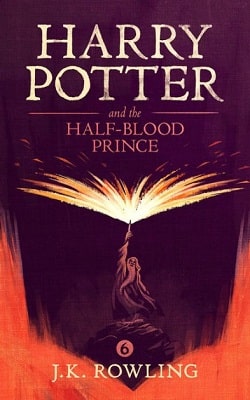“Two and a half million pounds will be deposited within the hour into the account you provided earlier. Once your operation is officially over and the remaining evidence destroyed, the balance will be paid. We need that to happen within the next forty-eight hours.”
“What about my other matter?”
“Where is Cotton Malone?”
He knew the answer, thanks to the call from Malone last night asking him to take custody of Ian Dunne and the bookstore owner. He hadn’t wanted to do either, but to keep Malone in the field he’d dispatched an agent to retrieve them.
“He’s headed for Hampton Court.”
Thirty-seven
9:10 AM
MALONE LOVED HAMPTON COURT. THE GARGANTUAN REDBRICK palace, perched on the Thames’ north bank, had stood for five hundred years. Once Templar land, then a possession of the Knights Hospitallers, the locale was eventually acquired by Thomas Wolsey, in 1514, at the peak of his power, just before he became archbishop of York, a cardinal, then lord high chancellor. But six years later Wolsey was falling from favor, unable to secure the divorce Henry VIII wanted from Katherine of Aragon. To placate the king, Wolsey gave Hampton Court to Henry.
Malone loved that story. Especially how the move failed and Wolsey fell victim to the same cruelty he’d meted out onto others, eventually having the good sense to die before he could be beheaded. Henry, though, loved his gift and promptly expanded the palace to suit royal needs. Centuries later, Oliver Cromwell intended to sell it off for scrap but came to regard it as a welcome escape from the smoke and mists of London, so he lived there. The great architect Christopher Wren intended to raze it and build a new palace, but a lack of funds and the death of Mary II stymied his plan. Instead, Wren added a massive baroque annex that still sat in stark contrast to the original Tudor surroundings.
Here, at a crook beside the slow-moving Thames, in a thousand-room palace reminiscent of a small village, the presence of Henry VIII could still be felt. The stone pinnacles, the walls of red brick embellished with blue patterns, the parapets, myriad chimneys—all were Tudor trademarks. Here Henry built his Great Hall and added an astronomical clock, elaborate gateways, and a tennis court, one of the first in England. He refashioned the kitchens and apartments and entertained foreign dignitaries with unmatched extravagance. His wives were deeply connected here, too. At Hampton Court, Katherine of Aragon was cloistered away, Anne Boleyn fell from grace, Jane Seymour gave birth to the heir then died, Anne of Cleves was divorced, Katherine Howard was arrested, and Katherine Parr was married.
If any place was of the Tudors it was Hampton Court.
He and Kathleen Richards had traveled by train the twenty miles from central London. Richards had wisely suggested that her car, parked not far from Miss Mary’s bookstore, could be either under surveillance or electronically tagged. The train offered anonymity and brought them to a station only a short walk from the palace, hundreds of others joining them on the trip. He’d made the call to Miss Mary’s sister, who worked at Hampton Court, and she suggested a meeting, on site, just after opening time.
He was both perplexed and intrigued.
Elizabeth I, queen of England 45 years, regarded as one of its greatest monarchs … a man?
The thought was at first preposterous, but he reminded himself that both the CIA and British intelligence were keenly interested in the revelation.
Why?
Kathleen Richards was also more questions than answers. That Thomas Mathews wanted her dead was troubling on a number of levels. He agreed with her assessment that something was wrong with the “dead” professor at Jesus College, and how the shooter at the bookstore had not injured anyone with stray bullets. Theater? Maybe. He’d seen quite a bit of that during his time with Justice.
But to what end?
They followed a talkative crowd down a wide stone walk, through the main gate, and into a courtyard that led to another gate. Royalty had not lived here in two hundred years, and he knew the tale associated with the second gate. After Henry married Anne Boleyn he had her falcon crest and their initials entwined in a lover’s knot carved into its ceiling panels. Soon after Anne’s head was chopped off the king gave orders to remove all of the falcon crests and replace each A with a J for Jane Seymour, his new bride. In their rush to accomplish that task an A was missed, and still could be seen in the ceiling of the archway now above him.
Entering the paved courtyard beyond, he glanced up at the astronomical clock. An ingenious device, with the earth at its center and the sun revolving around it. In addition to the time of day, its outer dials reflected the phases of the moon and the number of days since the New Year. Even more clever was its ability to tell the high water at London Bridge, vital information in Henry VIII’s time when the tides governed royal travel to and from the palace.
“You described yourself perfectly, Mr. Malone.”
He turned to see a woman strolling toward them. Miss Mary? The same slim figure, silver hair, and congenial smile. An identical face, too, with little makeup, only a touch of lipstick.
“I see my sister did not mention we were twins.”
“She left that detail out.”
The resemblance between the sisters was uncanny, even down to the same mannerisms. She introduced herself as Tanya Carlton and told them both to call her by her first name.
“I live just across the Thames. But I operate the gift shop inside the Clock Court.”
Even their voices were identical.
“I bet you two had some fun when you were young,” he said.
She seemed to understand what he meant. “We still do, Mr. Malone. People have a difficult time telling us apart.”
“You know why we’re here?” Richards asked.
“Mary explained. She knows my interest with all things Tudor, especially Elizabeth.”
“Is this real?” he asked.
The older woman nodded. “It just might be.”
KATHLEEN WAS CAREFUL NOT TO ALLOW HER INTEREST TO show. She assumed Mathews was somewhere nearby, watching. She’d acknowledged her consent back at the hotel, then sat quietly until Malone returned with three sheets that he’d printed in the Churchill’s business center.
From the flash drive, he told her.
But he’d not mentioned where the drive was located. She had to assume he was carrying it, but to ask would be foolish.
Just be patient.
And wait for an opportunity.
ANTRIM WAS NOT HAPPY WITH HAVING IAN DUNNE AND THE bookstore owner around. They interfered with his time with Gary. He had only a few precious hours to make an impact and the fewer interruptions the better. But he could not have refused Malone’s request. He needed the ex-agent dead, and for that to happen he needed him in the field. If the price for that was two more joining the party, then so be it. He’d keep them all together a little while longer. Once he returned to the warehouse, he’d have the woman and Dunne taken back to the safe house.
He’d left Westminster and stopped at a pub to grab a bite to eat. He’d also verified by phone that the one-half payment had in fact been deposited in a Luxembourg account. He was three and a half million dollars richer.
And it felt great.
Though it wasn’t yet 10:00 AM, he decided some lunch would be good. He placed an order for a burger and chips and sat in one of the empty booths. A television played behind the bar, set to the BBC. Its volume was down, but something on the screen caught his eye.
A man.
And a tag scrolled across the bottom.
ABDELBASET AL-MEGRAHI SET TO BE RELEASED BY SCOTTISH AUTHORITIES.
He spotted a TV remote on the bar, quickly stepped over and increased the volume. The attendant gave him a glance but he told him he wanted to hear what the reporter had to say.
“… Scottish officials have confirmed that Libyan terrorist Abdelbaset al-Megrahi, convicted of the 1988 Pan Am 103 bombing over Lockerbie, will be sent back to Libya. Al-Megrahi has been diagnosed with terminal can
cer and, for humanitarian reasons, will be returned to Libya to live out his final days. Forty-three United Kingdom citizens died that day, December 21, 1988, including eleven on the ground in Scotland. On hearing the news, relatives were shocked. No word, as yet, on Downing Street’s reaction. Sources close to the negotiations, ongoing with Libya, say that the release may come within the next few days. Reports of the release first came from Libya, confirmed by Edinburgh within hours. No one has, as yet, spoken publicly about the possibility, but no one has denied the reports, either. We will be following this closely and will provide additional reports, as they are obtained.”
He muted the volume and returned to his booth.
He knew the drill. A leak designed to gauge public reaction. The news would be allowed to simmer a few days, then more would be leaked. Done correctly, in just the right amounts, the story’s shock value would fade. Unless some groundswell of opposition rose, supported by a relentless media barrage, the story would eventually be forgotten as the world moved on to something else.
Allowing the leak also announced one more thing.
No turning back. Everyone was committed. The idea now was to get it done before anything could stop it. But what were the Brits receiving for their silence? Why allow it to happen? He still wanted to know the answer to that question, along with one other thing.















